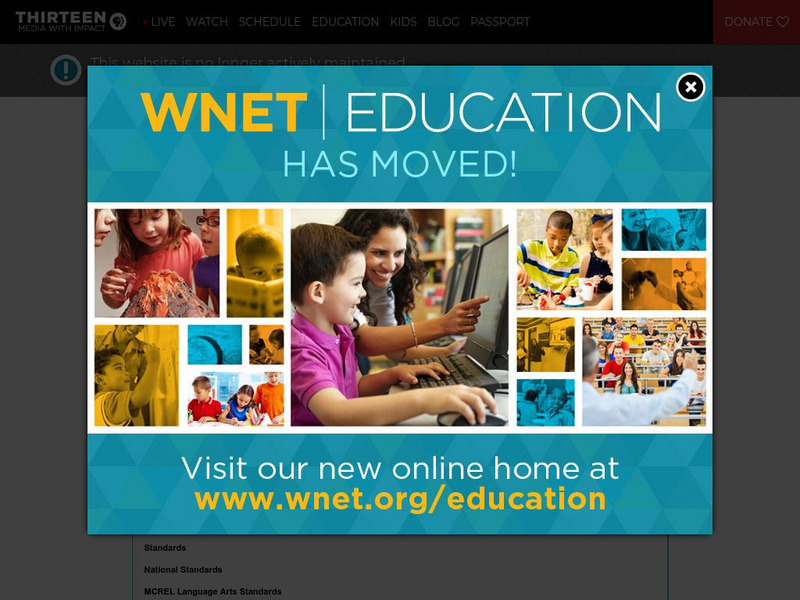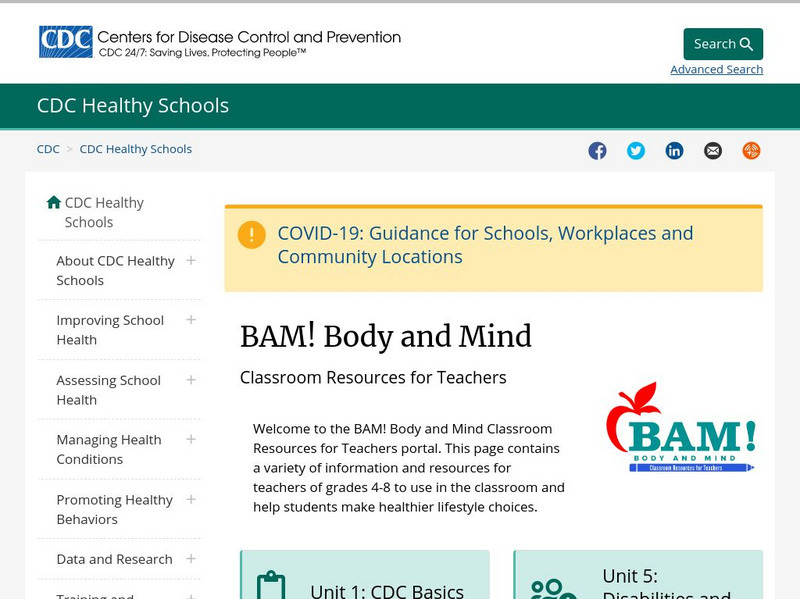Hi, what do you want to do?
Curated OER
Debating the Issues of Rockdale County
Students interpret information from the video "The Lost Children of Rockdale County" through a series of written questions and answers, and group discussion and evaluate the parameters of parental responsibility in the lives of teenagers.
Curated OER
Wisconsin Historical Events Calendar
Fourth graders create a calendar of historical events and people in Wisconsin. They select a month of the year and research events and people using the Internet and other resources. They collect their research and create a reencactment...
Curated OER
Children in War and Strife: Case Studies
Students examine the lives of students in war torn countries. After reading case studies, they work together to answer discussion questions. They review the roles of the Human Rights Watch and Amnesty International and develop a museum...
Curated OER
Avalanche
Learners investigate the concept of avalanches and how they effect people who use the slopes. They conduct research using multiple resources that includes the internet in order to create a final oral presentation.
Curated OER
Tools of the Historian: Frame of Reference
Students discuss the term point of reference and describe their own point of view. They compare the relationship between sources and the historical context. They identify examples of how point of reference can affect one's interpretation.
Curated OER
Who's Who in Government: Past, Present and Future
Twelfth graders research a list of governmental leaders of South Carolina's past and present. They briefly identify each by writing a short summary which includes the dates of their political career, party affiliation, positions held in...
Curated OER
Democratic Process, Constitutional Issues, Local Government
Twelfth graders engage in the decision making process so as to encourage them to become active citizens upon graduation from high school.
Curated OER
The Five Food Groups
Third graders explore the five food groups. They discuss the importance of the five food groups in their diets. Students research each of the five food groups using a WebQuest. They use the information from the WebQuest to make healthy...
Curated OER
Lesson Plan 4: Political Advertising
Students observe a political advertisement and evaluate the views promoted in the ad. After exploring governmental policies, students create their own 30-second ad to promote a specified cause and publicize their views. Students share...
Curated OER
Ohio Animal Activity
Second graders explore the various animals of Ohio. They compare the activities of the different animals during the different seasons throughout the year. Students publish their findings in a report and share it with the class.
Other
Media Education Lab: Assignment: Media Literacy: Secondary School
A well-done set of units that helps teachers teach the importance of media literacy to their students. Click on Secondary School Introduction to see a video of teachers in the classroom instructing students in ways of using and...
PBS
Wnet: Thirteen: Lesson Plan: How Media Shapes Perception
Interesting lesson plan that allows students to explore the messages and influence of the media, especially on young minds. Objectives, standards, and procedures included for teachers.
iCivics
I Civics: The Role of Media
Students examine the types and roles of the media by taking on the role of newsmaker and agenda-setter.
PBS
Pbs: Don't Buy It Get Media Smart
PBS provides resources to help teachers encourage media literacy. Access, evaluate, and analyze electronic and print media. Dissect pop culture and advertisements. Use the Get Media Smart Resources to uncover advertising tricks, make...
PBS
Pbs Learning Media: Precipitation on the Planet
Precipitation affects many aspects of our lives, from drinking water and food to devastating rain or snow storms. NASA gathered information from satellites to study factors that influence precipitation. View these narrated and unnarrated...
Centers for Disease Control and Prevention
Centers for Disease Control: Bam! Teacher's Corner: If Those Dolls Were Real People
A lesson exploring how the media influences body images. Students take measurement of dolls and characters to compare them with a chart on the website to show what the dolls and characters would look like if they were the height of an...
PBS
Pbs Learning Media: Earth System: El Nino's Influence on Hurricane Formation
This video segment adapted from NASA's Goddard Space Flight Center explains how and where hurricanes develop. Learn how El Nino events alter the course of atmospheric circulation. Includes background reading material and discussion...
PBS
Pbs Learning Media: Great Ocean Conveyor Belt: Part I
This image from GRID-Arendal depicts the major circulation pattern of the ocean, illustrating interactions between temperature, salinity, and depth. Includes a background reading handout and several discussion questions.
PBS
Pbs Teachers: Sports Screeners
Examine how physical activity and sports are depicted in movies and on television. Hypothesize how images of physical activity and sports depictions in entertainment can influence young people's attitudes and behaviors.
PBS
Pbs Learning Media: Wide Angle: All for One
In this short video, students learn about the influence of the communist values of the Worker's Party on North Korean society as it affects one family in the capital of Pyongyang. [3:07]
PBS
Pbs Learning Media: Wide Angle: Church for Sale
Wide Angle video reports on the sale of The Sacred Heart Church in central Limerick, Ireland as the influence of the Catholic Church on Irish society dwindles. [3:21]
PBS
Pbs Teachers: The Climate Change Skeptic's Argument
Lesson plan examines the possibility that the contemporary climate change is due to natural solar cycles. Objectives are to review the evidence of total solar irradiance, analyze data to understand the influence of solar variability, and...
PBS
Pbs Teachers: The Presidential Debates (Lesson Plan)
A lesson activity that has students investigating media coverage of presidential debates and discussing how viewers are influenced by things other than the issues being debated. Students will also explore techniques that can help viewers...
PBS
Pbs Teachers: Just Desserts
Identify advertising techniques designed to encourage children to overindulge in unhealthy foods. Explore the motives behind advertising and use your knowledge to think critically about ads all around you. Scroll down to "Just Desserts,"...






















